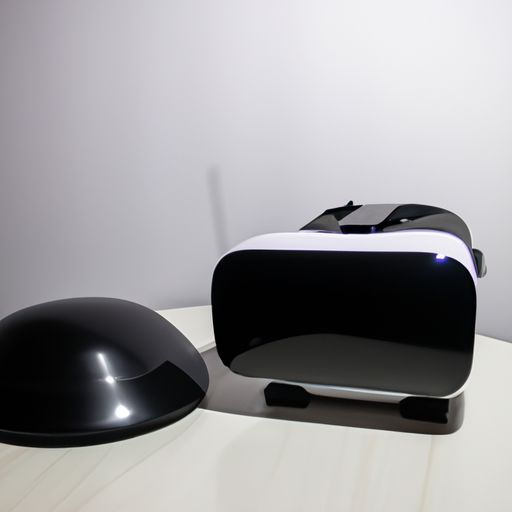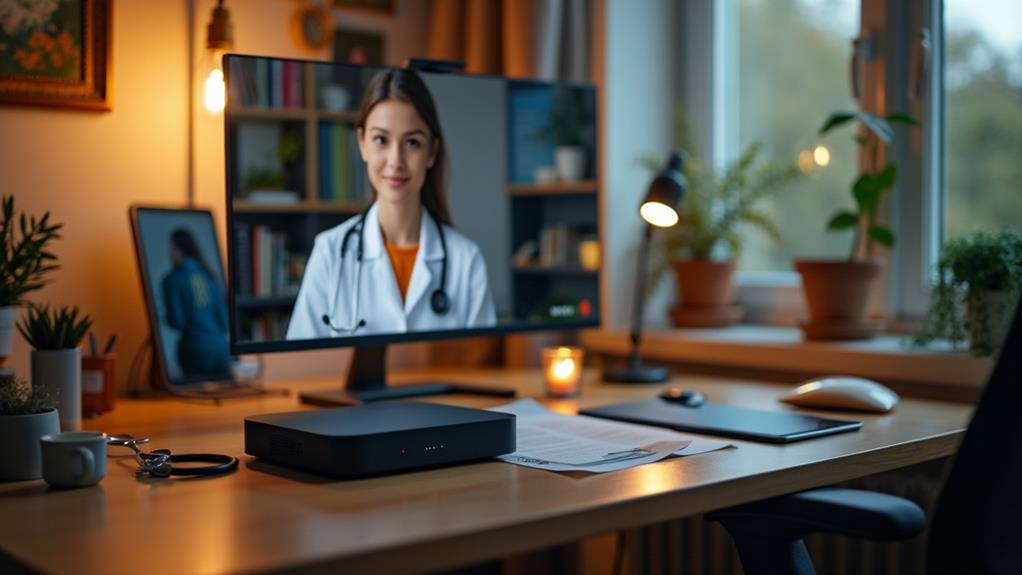



Did you know that mini PCs have become increasingly popular in recent years? These compact and portable devices are perfect for those who are always on the go or have limited space. But with the rise in popularity of virtual reality, you might be wondering if these mini PCs are capable of supporting virtual reality headsets. Well, the answer is yes! While mini PCs may not have the same processing power as their larger counterparts, many of them are still capable of running virtual reality applications and games smoothly. In fact, with advancements in technology, mini PCs are becoming more powerful and capable of handling even the most demanding virtual reality experiences. So, if you’re considering investing in a mini PC, rest assured that you won’t have to compromise on your virtual reality adventures.
Mini PCs and Virtual Reality
Virtual reality (VR) has become increasingly popular in recent years, immersing users in realistic and interactive digital environments. To experience VR, you need powerful hardware that can handle the demanding graphics and processing requirements. While traditional desktop computers are commonly used for VR, there is a growing interest in using mini PCs as a more compact and portable option. In this article, we will explore the compatibility of mini PCs with virtual reality headsets, discuss the minimum system requirements, and provide recommendations for using mini PCs with VR.
What are mini PCs?
Mini PCs, also known as small form factor (SFF) PCs, are compact computers that provide similar functionality to traditional desktop computers but in a smaller size. They are designed to be space-saving and energy-efficient while still delivering decent performance. Mini PCs often come with pre-installed operating systems, making them user-friendly right out of the box.
What are virtual reality headsets?
Virtual reality headsets are wearable devices that allow users to experience virtual reality by blocking out the real-world environment and immersing them in a simulated digital world. These headsets typically consist of a display, lenses, and motion tracking sensors, providing a 360-degree interactive experience. VR headsets require a powerful computer system to generate the graphics and process the data necessary for the immersive experience.
Minimum System Requirements
To ensure a smooth and enjoyable VR experience, your mini PC needs to meet certain minimum system requirements. These requirements include the graphics processing unit (GPU), central processing unit (CPU), random access memory (RAM), storage, and operating system.
Graphics Processing Unit (GPU)
The GPU plays a crucial role in rendering the high-quality graphics required for virtual reality. It is responsible for handling the complex calculations and rendering tasks to create realistic and immersive environments. For a mini PC to support VR, it should have a GPU that meets the minimum requirements set by the VR headset manufacturer.
Central Processing Unit (CPU)
The CPU is responsible for carrying out the instructions of the software running on the computer. While the GPU handles the majority of the heavy lifting in VR applications, a capable CPU is still necessary to ensure smooth overall performance. A multi-core processor with a high clock speed is recommended for VR gaming.
Random Access Memory (RAM)
RAM is used to temporarily store data that is being actively used by the computer. In VR applications, there is a significant amount of data being processed in real-time, so having an adequate amount of RAM is crucial. Most VR headsets recommend a minimum of 8GB of RAM, but having more can improve performance and reduce lag.
Storage
Storage is where all your files, games, and applications are stored on the computer. While not directly affecting VR performance, having sufficient storage space is important to accommodate the large files associated with VR games and experiences. Solid-state drives (SSDs) are highly recommended for faster loading times and smoother performance.
Operating System
The operating system (OS) is the software that manages the hardware and software resources of the computer. Most VR headsets support popular operating systems such as Windows, so ensure that your mini PC is running a compatible OS version.
Compatibility Issues
When using mini PCs for VR, there are a few compatibility issues that you may encounter. These include GPU performance limitations, connectivity options, and power requirements.
GPU Performance
Mini PCs are known for their compact size, and this often means that they have less powerful GPUs compared to full-sized desktop computers. While some mini PCs come with decent GPUs, others may have integrated graphics that are not capable of handling the demanding graphics requirements of VR. It is important to check the GPU specifications and ensure that it meets the minimum requirements for the VR headset you plan to use.
Connectivity Options
VR headsets typically require multiple connections, such as HDMI or DisplayPort for the display, USB ports for tracking sensors and other peripherals, and audio connections for headphones or speakers. Smaller mini PCs may have limited connectivity options, so it is important to ensure that your mini PC has enough ports to accommodate all the necessary connections for your VR setup.
Power Requirements
VR headsets can be power-hungry devices, and it is important to take into consideration the power requirements when using a mini PC. Some mini PCs may not have a sufficient power supply to handle the additional power demands of VR peripherals. It is important to ensure that your mini PC has a robust power supply to handle the load.
Mini PC Options for VR
When considering using a mini PC for VR, you have two main options: pre-built mini PCs or custom-built mini PCs. Both options have their advantages and considerations.
Pre-built Mini PCs
Pre-built mini PCs are ready-to-use systems that come with the necessary hardware and software pre-installed. They are often designed to be compact and user-friendly, making them a convenient option for those who want a hassle-free VR experience. However, pre-built mini PCs may have limited customization options and may not always meet the specific requirements of VR gaming.
Custom-built Mini PCs
Custom-built mini PCs offer more flexibility in terms of hardware selection and configuration. With a custom-built mini PC, you can choose the individual components based on your specific needs and budget. This allows for better optimization of the system for VR and ensures that you have the necessary performance capabilities. However, building a custom mini PC requires technical knowledge and may require more time and effort.
Pre-built Mini PCs
If you decide to go with a pre-built mini PC for your VR setup, it is important to consider the brands and models available, GPU and CPU performance, and the included ports and connectivity options.
Brands and Models
There are several reputable brands that offer pre-built mini PCs suitable for VR, such as Intel NUC, MSI Trident, and ASUS ROG GR8. These brands have a range of models that cater to different performance levels and budgets. It is important to research and read reviews to find the model that best fits your requirements.
GPU and CPU Performance
When choosing a pre-built mini PC for VR, it is crucial to consider the GPU and CPU performance. Look for models with dedicated GPUs that meet or exceed the minimum requirements of your VR headset. Additionally, ensure that the CPU is capable of handling the processing demands of VR applications.
Included Ports and Connectivity
Check the ports and connectivity options available on the pre-built mini PC. Ensure that it has the necessary connections for your VR headset, such as HDMI, USB, and audio ports. Having enough ports will make it easier to set up and connect your VR peripherals.
Custom-built Mini PCs
If you have the technical skills and knowledge, building a custom mini PC can be a rewarding experience. Here are some considerations when choosing the right components, assembling and configuring the system, and budget considerations.
Choosing the Right Components
When building a custom mini PC, carefully choose the components based on your VR requirements. Consider the GPU, CPU, RAM, storage, and power supply unit (PSU). Ensure that each component meets or exceeds the recommended specifications of your VR headset. Additionally, choose a compact and compatible mini ITX motherboard and a small form factor case that can accommodate all the selected components.
Assembly and Configuration
Assembling a mini PC requires attention to detail to ensure that everything fits properly in the small form factor case. Make sure to follow the manufacturer’s instructions for each component and properly connect all cables and connectors. After the physical assembly, install the operating system and configure the necessary drivers and software for VR compatibility.
Budget Considerations
Building a custom mini PC can be cost-effective when compared to purchasing a pre-built system. However, it is important to consider your budget when selecting components. Allocate more budget to critical components such as the GPU and CPU, as these are crucial for VR performance. Prioritize your expenditure based on the performance requirements of your VR headset.
Optimizing Mini PCs for VR
To further enhance your VR experience, there are several optimizations you can consider for your mini PC. These include upgrading the GPU and CPU, adding more RAM, exploring storage options, and implementing cooling solutions.
Upgrading GPU and CPU
If the performance of your mini PC is not meeting your VR requirements, consider upgrading the GPU and CPU. Upgrading to a more powerful GPU will improve graphics rendering, while a faster and more capable CPU will handle processing tasks more efficiently. Before upgrading, ensure compatibility with your mini PC’s motherboard and power supply.
Adding More RAM
Adding more RAM can improve VR performance by providing more memory for the system to store and access data. Consider upgrading to 16GB or even 32GB of RAM to ensure smoother multitasking and reduce lag in VR applications.
Storage Options
Consider upgrading your storage to a faster solid-state drive (SSD) for quicker load times and smoother performance. SSDs offer faster data access speeds compared to traditional hard disk drives (HDDs), enhancing the overall VR experience.
Cooling Solutions
Mini PCs can be prone to overheating due to their compact form factor. Implementing proper cooling solutions, such as additional case fans or liquid cooling, can help maintain optimal temperatures during intense VR gaming sessions. Ensure that the cooling solutions you choose are compatible with the size and layout of your mini PC case.
Using Mini PCs with VR Headsets
Once you have set up your mini PC and VR headset, it is important to consider the setup and installation process, performance and compatibility, and software and driver updates.
Setup and Installation
Follow the instructions provided by both your mini PC and VR headset manufacturers for the setup and installation process. Ensure that all the necessary cables and connectors are properly connected. Install the required software drivers for your VR headset to ensure proper functionality.
Performance and Compatibility
Test the performance and compatibility of your mini PC with your VR headset by running various VR applications and games. Monitor the performance metrics, such as frame rates and smoothness, to determine if any adjustments or upgrades are necessary. Check for any compatibility issues and ensure that your mini PC meets the recommended specifications of your VR headset.
Software and Driver Updates
Regularly update the software and drivers for both your mini PC and VR headset. Manufacturers frequently release updates to improve performance, fix bugs, and add new features. Keeping your system up to date ensures that you have the latest optimizations and fixes for a smoother VR experience.
User Experiences and Recommendations
Many users have successfully used mini PCs for VR gaming and have shared their experiences and recommendations. Here are some advantages of mini PCs for VR, limitations and workarounds, and recommended mini PC and VR headset combinations.
Advantages of Mini PCs for VR
- Portability: Mini PCs are significantly smaller and more portable than traditional desktop computers, allowing for easy setup and transport for VR gaming sessions.
- Space-saving: Mini PCs take up less physical space, making them ideal for users with limited desk space or those who prefer a clutter-free gaming area.
- Energy-efficiency: Mini PCs are often designed to be energy-efficient, resulting in lower power consumption and reduced electricity costs.
- Cost-effective: Building a custom mini PC can be cost-effective compared to purchasing a pre-built system, allowing you to allocate more budget to critical components.
Limitations and Workarounds
- GPU limitations: Mini PCs may have limited GPU options, which can affect the graphical performance of VR games. Consider upgrading the GPU for better performance.
- Connectivity limitations: Some mini PCs may have limited connectivity options, requiring the use of adapters or additional hubs to connect all the necessary VR peripherals.
- Power limitations: Ensure that your mini PC has a sufficient power supply to handle the power requirements of the VR headset and any additional peripherals.
Recommended Mini PC and VR Headset Combinations
- Intel NUC with Oculus Rift: The Intel NUC offers a compact and powerful mini PC option, suitable for VR gaming. Combine it with the Oculus Rift for an immersive VR experience.
- MSI Trident with HTC Vive: The MSI Trident provides a balance between compactness and performance, making it a great choice for VR gaming. Pair it with the HTC Vive for an exceptional VR experience.
- ASUS ROG GR8 with Valve Index: The ASUS ROG GR8 offers a powerful gaming mini PC, perfect for VR. Combine it with the Valve Index for high-resolution visuals and fluid gameplay.
Conclusion
Mini PCs have proven to be a viable option for supporting virtual reality headsets. Their compact size, energy-efficiency, and portability make them attractive choices for users looking for a more streamlined VR experience. By ensuring that your mini PC meets the minimum system requirements, considering compatibility issues, and optimizing your system for VR, you can enjoy a smooth and immersive VR gaming experience. As technology continues to advance, we can expect to see further developments and innovations in mini PCs and virtual reality, making them an exciting combination for future gaming possibilities.
Disclosure: As an Amazon Associate, I earn from qualifying purchases.






